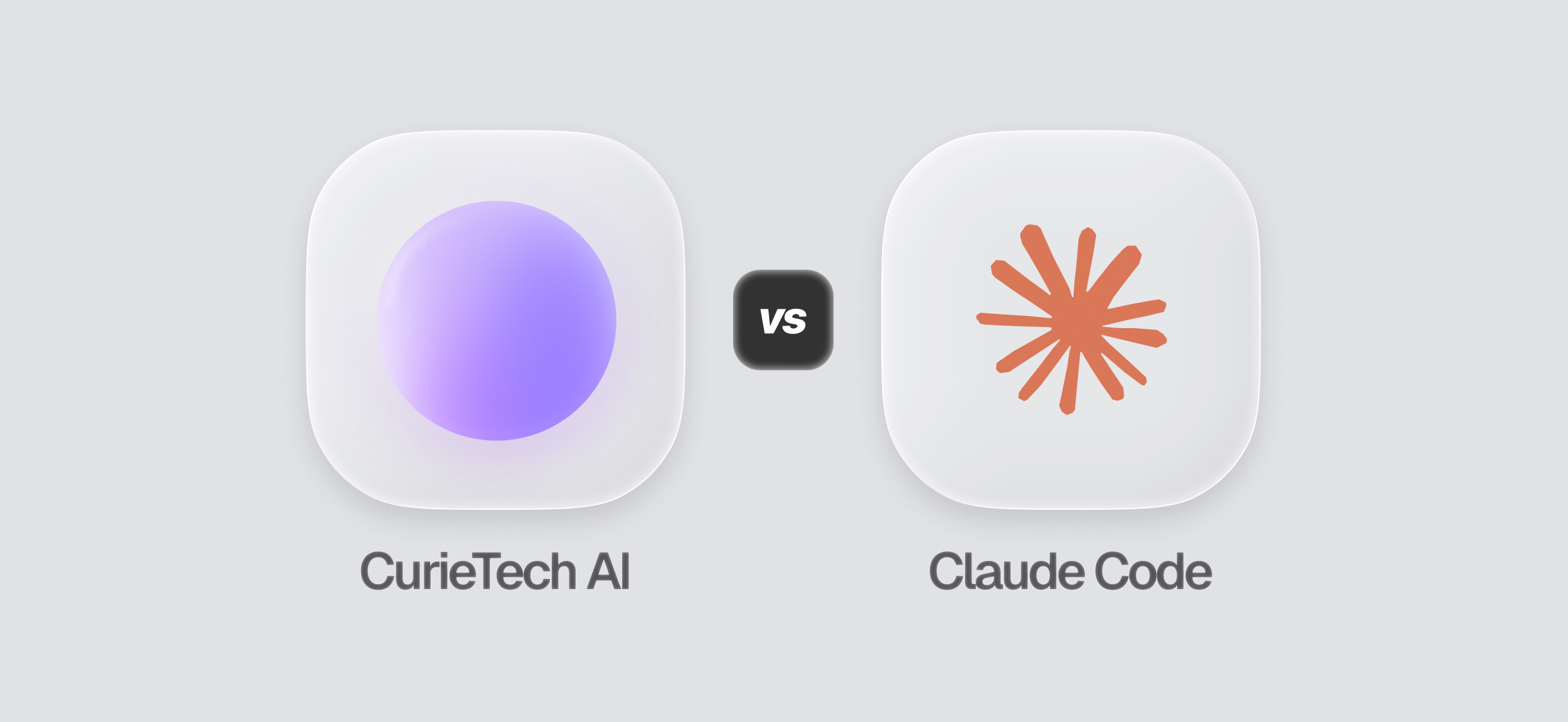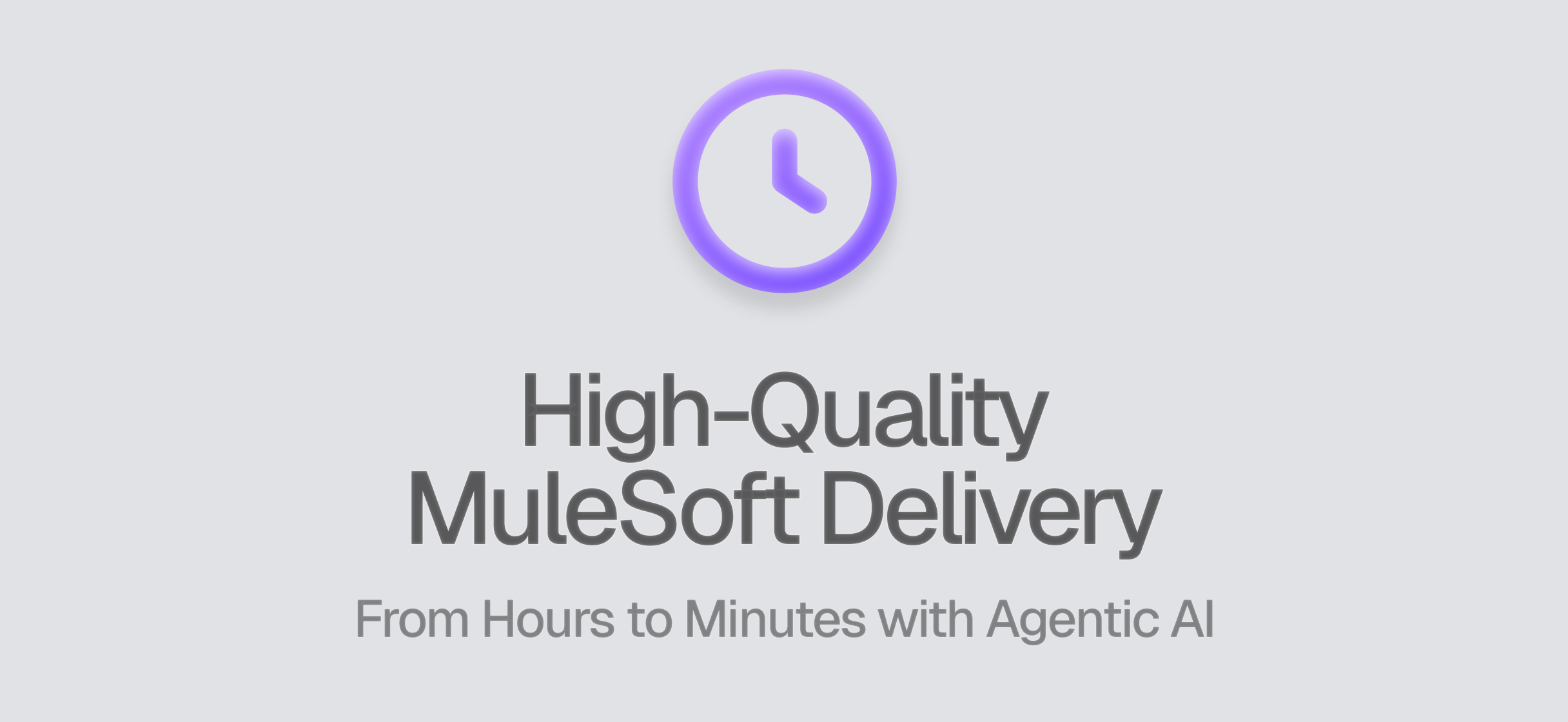Introduction: Addressing Enterprise Integration Complexity
Enterprise integrations are inherently challenging. Connecting disparate systems—each characterized by unique data models, schemas, and APIs—involves complex transformations far beyond basic format conversions. Traditionally, these transformations represent critical bottlenecks, requiring significant resources, specialized skills, and intensive debugging. At CurieTech AI, we're tackling this challenge by pioneering advanced AI-driven automation, beginning with MuleSoft’s DataWeave.
DataWeave: An Ideal Domain for AI-Driven Automation
DataWeave, MuleSoft’s powerful functional language for data manipulation, significantly enhances integration workflows. However, its expressive power often introduces steep learning curves and potential errors. Clearly defined yet technically challenging, DataWeave is uniquely suited for advanced AI automation. At CurieTech AI, we leverage sophisticated machine learning techniques specifically designed to automate DataWeave tasks, improving developer productivity and accelerating integration timelines.
Effective DataWeave automation requires advanced AI capabilities:
- Semantic Understanding: Accurately interpreting data transformation intent and relationships.
- Syntax Mastery: Comprehensive fluency in DataWeave syntax, built-in functions, and patterns.
- Contextual Optimization: Generating optimized, best-practice compliant solutions.
CurieTech AI’s Advanced AI Methodology
CurieTech AI’s solution surpasses traditional AI code-generation methods by employing highly specialized AI agents uniquely optimized for complex DataWeave transformations. Our methodology strategically integrates advanced ML and AI techniques, including:
- Retrieval-Augmented Generation
Leveraging domain-specific embeddings and retrieval methods for deeper contextual understanding.
- Synthetic Data Augmentation
Proprietary approaches to generating diverse, high-quality synthetic data, enhancing robustness without external dependencies.
- Implicit Reinforcement Learning Signals
Sophisticated supervised fine-tuning methods implicitly integrating reinforcement-learning principles, driving continual improvement without online feedback.
- Multi-Stage Validation and Refinement
Comprehensive validation and iterative refinement processes ensuring generated code meets rigorous accuracy standards.
By strategically integrating these advanced methodologies, CurieTech AI maintains a clear technical advantage, delivering superior accuracy while safeguarding proprietary implementation specifics.
Quantitative Performance Insights on DataWeave Tasks
Our internal evaluations demonstrate the significant impact of domain-specific training and an agentic approach on AI performance. CurieTech AI's specialized agents, fine-tuned explicitly for DataWeave tasks, consistently achieve superior accuracy by effectively capturing domain-specific nuances essential for precise transformations. In contrast, general-purpose large language models, while powerful in general reasoning tasks, lack the targeted expertise necessary to excel in specialized scenarios. This clear distinction underscores the advantage of tailored AI solutions, highlighting how specialized fine-tuning and the deployment of AI agents can substantially enhance performance compared to generic models.
Sample Example where CurieTech agent shines and all other LLM (Deepseek R1, O1, O3-mini (High), Claude 3.7 with Extended Thinking, Gemini 2.0 Flash) suffers even after multiple iterations. Give it a try at CurieTech AI:
Input Data (JSON):
{
"AcesPayload": [
{
"ID": "ID_X1",
"FACILITY_NUM": [101, 202, 303],
"NAME": "LOCATION ALPHA",
"A_VENDORNAME": "VENDOR_XYZ_001",
"A_VENDOR": "001"
},
{
"ID": "ID_X2",
"FACILITY_NUM": [404, 505, 606],
"NAME": "LOCATION BETA",
"A_VENDORNAME": "VENDOR_ABC_002",
"A_VENDOR": "002"
}
],
"locLookup": [
{
"FACILITYID": "101_Loc_A",
"FACILITYNUM": 101
},
{
"FACILITYID": "202_Loc_B",
"FACILITYNUM": 202
},
{
"FACILITYID": "303_Loc_C",
"FACILITYNUM": 303
},
{
"FACILITYID": "404_Loc_D",
"FACILITYNUM": 404
},
{
"FACILITYID": "505_Loc_E",
"FACILITYNUM": 505
},
{
"FACILITYID": "606_Loc_F",
"FACILITYNUM": 606
}
]
}Output Data (XML):
<?xml version='1.0' encoding='UTF-8'?>
<STEP-ProductInformation ExportTime="2025-02-25 01:52:29" ExportContext="Context1" ContextID="Context1" WorkspaceID="Main" UseContextLocale="false">
<Classifications>
<Classification ID="ID_X1" UserTypeID="TESTVENDOR" ParentID="PARENTTESTVENDOR">
<Name>VENDOR_XYZ_001</Name>
<ClassificationCrossReference ClassificationID="101_Loc_A" Type="VendorToFacilityLink"/>
<ClassificationCrossReference ClassificationID="202_Loc_B" Type="VendorToFacilityLink"/>
<ClassificationCrossReference ClassificationID="303_Loc_C" Type="VendorToFacilityLink"/>
<ClassificationCrossReference ClassificationID="404_Loc_D" Type="VendorToFacilityLink"/>
<ClassificationCrossReference ClassificationID="505_Loc_E" Type="VendorToFacilityLink"/>
<ClassificationCrossReference ClassificationID="606_Loc_F" Type="VendorToFacilityLink"/>
<MetaData>
<Value AttributeID="a_VendorName">LOCATION ALPHA</Value>
<Value AttributeID="a_Vendor">001</Value>
</MetaData>
</Classification>
<Classification ID="ID_X2" UserTypeID="TESTVENDOR" ParentID="PARENTTESTVENDOR">
<Name>VENDOR_ABC_002</Name>
<ClassificationCrossReference ClassificationID="101_Loc_A" Type="VendorToFacilityLink"/>
<ClassificationCrossReference ClassificationID="202_Loc_B" Type="VendorToFacilityLink"/>
<ClassificationCrossReference ClassificationID="303_Loc_C" Type="VendorToFacilityLink"/>
<ClassificationCrossReference ClassificationID="404_Loc_D" Type="VendorToFacilityLink"/>
<ClassificationCrossReference ClassificationID="505_Loc_E" Type="VendorToFacilityLink"/>
<ClassificationCrossReference ClassificationID="606_Loc_F" Type="VendorToFacilityLink"/>
<MetaData>
<Value AttributeID="a_VendorName">LOCATION BETA</Value>
<Value AttributeID="a_Vendor">002</Value>
</MetaData>
</Classification>
</Classifications>
</STEP-ProductInformation>Generated Dataweave Using CurieTech AI:
%dw 2.0
output application/xml
---
{
"STEP-ProductInformation" @(
ExportTime: "2025-02-25 01:52:29",
ExportContext: "Context1",
ContextID: "Context1",
WorkspaceID: "Main",
UseContextLocale: "false"
): {
Classifications: {
(payload.AcesPayload map (acesPayload) -> {
Classification @(
ID: acesPayload.ID,
UserTypeID: "TESTVENDOR",
ParentID: "PARENTTESTVENDOR"
): {
Name: acesPayload.A_VENDORNAME,
(payload.locLookup map (locLookup) -> {
ClassificationCrossReference @(
ClassificationID: locLookup.FACILITYID,
Type: "VendorToFacilityLink"
): null
}),
MetaData: {
Value @(AttributeID: "a_VendorName"): acesPayload.NAME,
Value @(AttributeID: "a_Vendor"): acesPayload.A_VENDOR
}
}
})
}
}
}Conclusion
CurieTech AI’s AI-powered technology revolutionizes enterprise integration workflows, reducing complexity and freeing engineers to focus on higher-value tasks. By automating intricate data transformations through advanced AI, CurieTech AI significantly accelerates development cycles and elevates engineering productivity. As AI technologies advance further, CurieTech AI remains committed to delivering increasingly sophisticated solutions, setting new standards in enterprise IT integration.
Interested in joining our team? Connect with us here.
To experience CurieTech AI’s transformative AI capabilities firsthand, visit our website and revolutionize your integration processes today!

.jpg)
.jpg)
.jpg)

